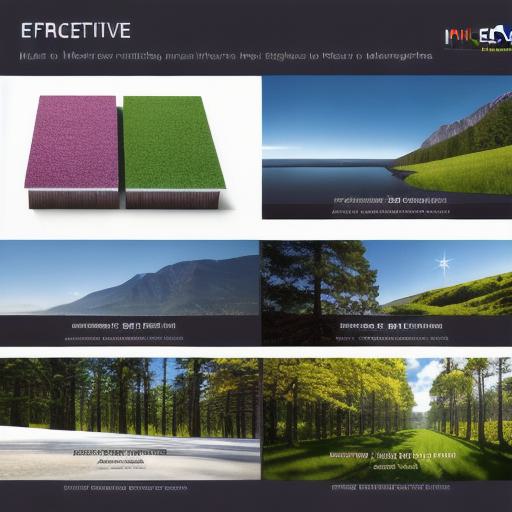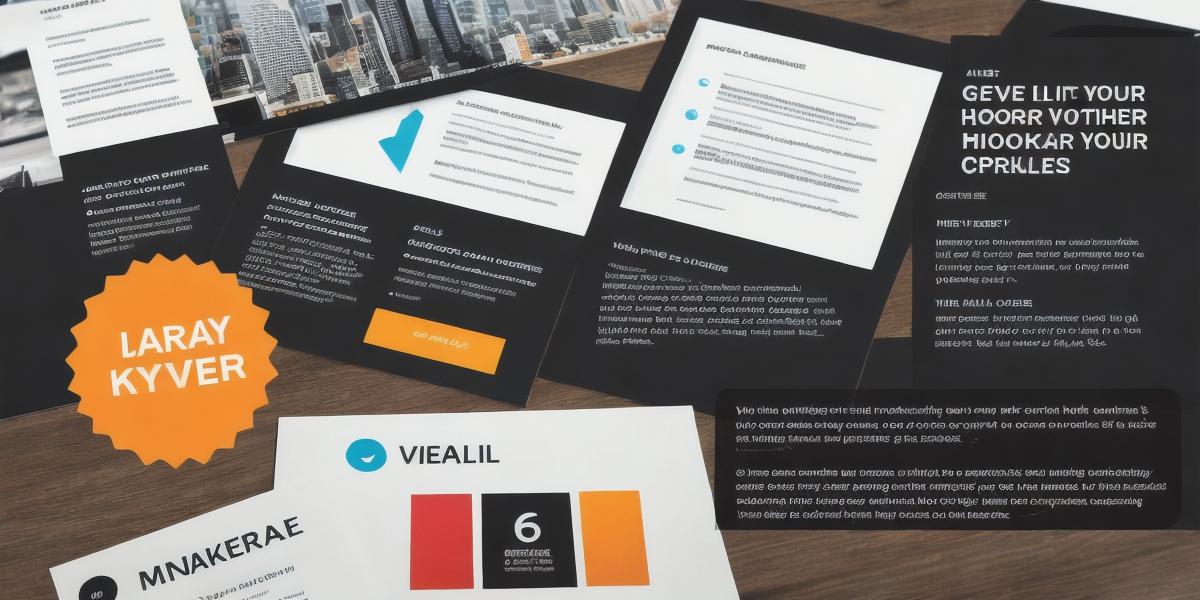As a marketing expert, I understand that creating effective marketing materials is essential for any business looking to attract and retain customers. With the rise of digital media and the increasing importance of online presence, it’s more important than ever to create engaging and informative content that resonates with your target audience. In this article, we will explore the key components of effective marketing materials, including SEO optimization techniques, case studies, and expert opinions to help you create viral content that drives traffic and conversions.
I. Introduction
Effective marketing materials are essential for any business looking to attract and retain customers. With the rise of digital media and the increasing importance of online presence, it’s more important than ever to create engaging and informative content that resonates with your target audience. In this article, we will explore the key components of effective marketing materials, including SEO optimization techniques, case studies, and expert opinions to help you create viral content that drives traffic and conversions.
II. The Importance of SEO Optimization in Marketing Materials
Search engine optimization (SEO) is the practice of optimizing a website or web page to rank higher in search engine results pages (SERPs). By improving your website’s visibility on search engines, you can attract more traffic and potential customers to your site.
Here are some tips for optimizing your marketing materials with SEO:
- Use relevant keywords: Identify the keywords that your target audience is using when searching for products or services related to your business, and use them strategically throughout your content.
- Optimize titles and meta descriptions: Write clear and concise titles and meta descriptions that accurately reflect the content of your page and include relevant keywords.
- Include alt tags on images: Use descriptive alt tags on all images on your website to improve accessibility for users with disabilities and help search engines understand the content of your images.
- Use internal and external links: Link to relevant pages on your own website and external websites that provide valuable information related to your business. This helps search engines understand the context of your content and can also help users find additional resources.
- Monitor your website’s performance: Use analytics tools to track your website’s performance, including traffic, engagement rates, and conversions. Use this data to optimize your marketing materials and improve your SEO efforts.
III. Case Studies and Personal Experiences
Case studies are a powerful tool for demonstrating the effectiveness of your marketing materials. By sharing real-life examples of how your products or services have helped other businesses, you can build credibility with potential customers and show them that your solutions work.
Here are some tips for using case studies in your marketing materials:
- Choose relevant case studies: Select case studies that are directly related to your business and the products or services you offer. This will help you demonstrate your expertise and provide valuable insights for potential customers.
- Keep it simple: Avoid long, complex case studies that may overwhelm your audience. Instead, focus on key metrics and results that highlight the success of your solutions.
- Include testimonials: Quotes from satisfied customers can help build credibility and show that your products or services are trusted by others in your industry.
- Use visual aids: Incorporate images, infographics, and other visual aids to make your case studies more engaging and easier to understand.

Personal experiences are another effective way to connect with potential customers and demonstrate the value of your products or services. By sharing your own journey in your industry and how you’ve used your solutions to overcome challenges, you can provide valuable insights and build credibility with your audience.
IV. Research and Experiments
Research and experiments are essential for creating effective marketing materials that resonate with your target audience. By conducting market research, analyzing customer data, and testing different approaches, you can identify what works best for your business and create content that drives results.
Here are some tips for using research and experiments in your marketing materials:
- Conduct market research: Use surveys, focus groups, and other methods to gather insights about your target audience’s needs, preferences, and pain points. This will help you create content that addresses their concerns and provides value.
- Analyze customer data: Use analytics tools to track customer behavior on your website, including clicks, engagement rates, and conversions. This will help you understand what works best for your audience and optimize your marketing materials accordingly.
- Test different approaches: Use A/B testing and other methods to test different content formats, messaging, and design elements to see what resonates with your target audience. This will help you refine your marketing materials and improve their effectiveness over time.
- Stay up-to-date on industry trends: Keep up with the latest developments in your industry by attending conferences, reading industry publications, and following thought leaders. By incorporating these insights into your content, you can stay ahead of the curve and create effective marketing materials that stand out from the competition.
V. Expert Opinions and Guidelines
Expert opinions and guidelines can provide valuable insights and best practices for creating effective marketing materials. By seeking advice from industry leaders and following established guidelines, you can ensure that your content is of high quality and resonates with your target audience.
Here are some tips for incorporating expert opinions and guidelines into your marketing materials:
- Seek advice from industry experts: Reach out to thought leaders, influencers, and other experts in your industry for guidance on creating effective marketing materials. They can provide valuable insights and best practices based on their own experience and successes.
- Follow established guidelines: There are many guidelines and standards that can help you create effective marketing materials, including the APA style guide for academic research, the Web Content Accessibility Guidelines (WCAG) for creating accessible websites, and the Google AdWords Best Practices for paid advertising.
- Stay up-to-date on industry trends: Keep up with the latest developments in your industry by attending conferences, reading industry publications, and following thought leaders. By incorporating these insights into your content, you can stay ahead of the curve and create effective marketing materials that stand out from the competition.
- Incorporate data and analytics: Use data and analytics to inform your marketing strategies and measure the effectiveness of your content. This will help you refine your approach over time and improve your overall results.
VI. Real-Life Examples
Real-life examples can help illustrate the key concepts and best practices for creating effective marketing materials. By sharing examples from successful businesses and case studies, you can provide valuable insights and inspire your audience to take action.
Here are some tips for incorporating real-life examples into your marketing materials:

- Choose relevant examples: Select examples that are directly related to your business and the products or services you offer. This will help you demonstrate your expertise and provide valuable insights for potential customers.
- Keep it simple: Avoid long, complex case studies that may overwhelm your audience. Instead, focus on key metrics and results that highlight the success of your solutions.
- Incorporate visual aids: Use images, infographics, and other visual aids to make your examples more engaging and easier to understand.
- Use comparisons and contrasts: Compare and contrast different approaches or strategies to help your audience understand the pros and cons of each option and make informed decisions.
VII. Summary
Effective marketing materials are essential for any business looking to attract and retain customers. By using SEO optimization techniques, case studies, personal experiences, research and experiments, expert opinions and guidelines, and real-life examples, you can create content that resonates with your target audience and drives results over time.
Remember to stay up-to-date on industry trends and best practices, keep it simple and engaging, and continuously refine your approach based on data and analytics. With these tips in mind, you can create effective marketing materials that stand out from the competition and achieve your business goals.




